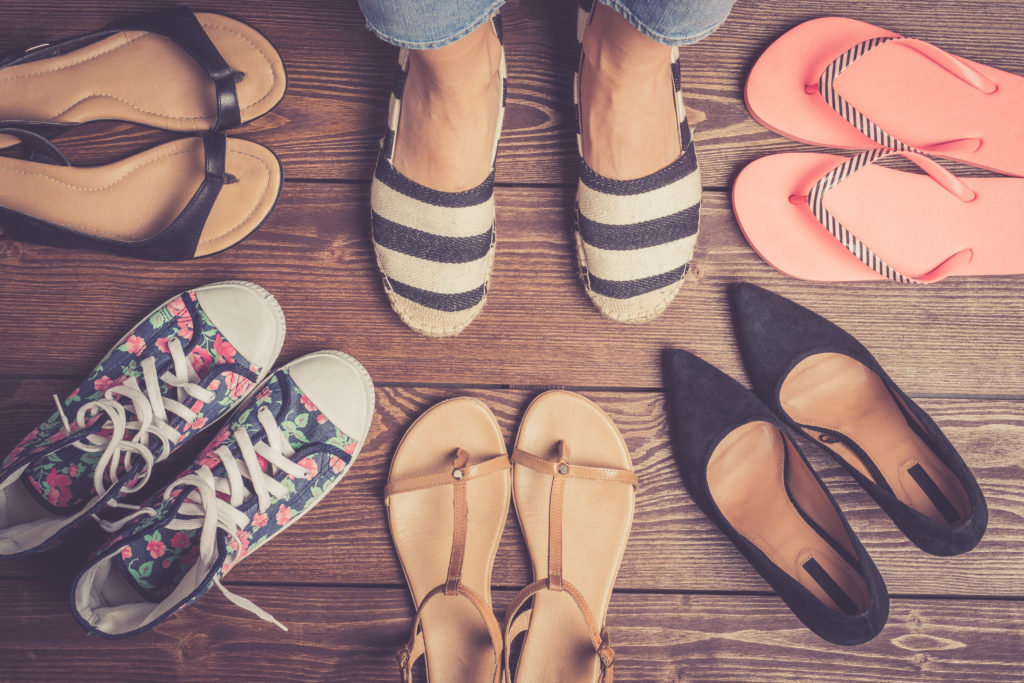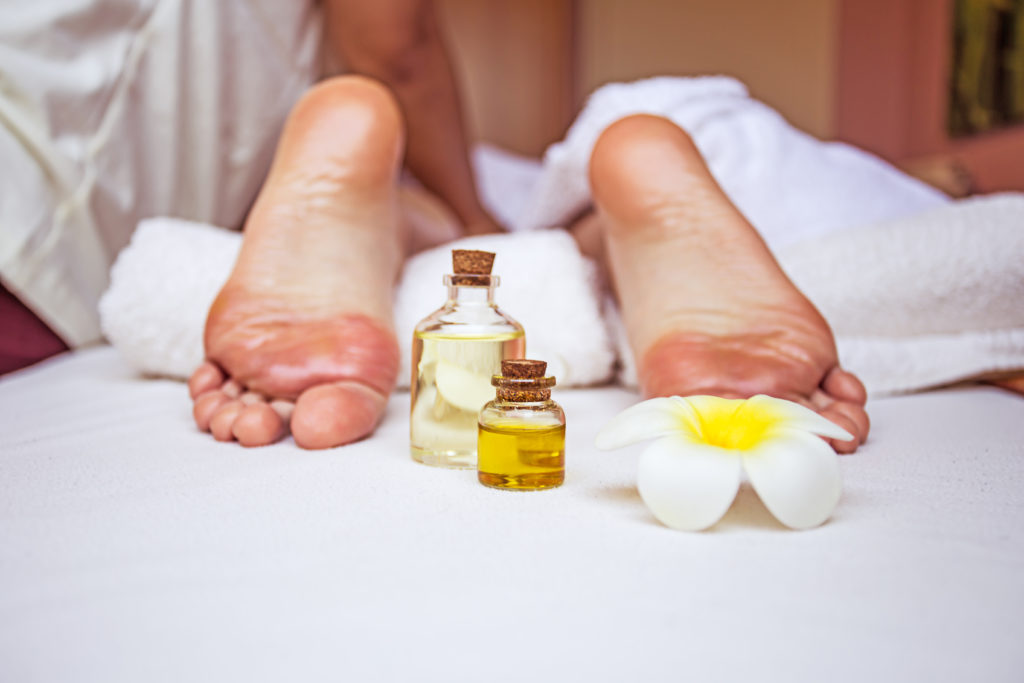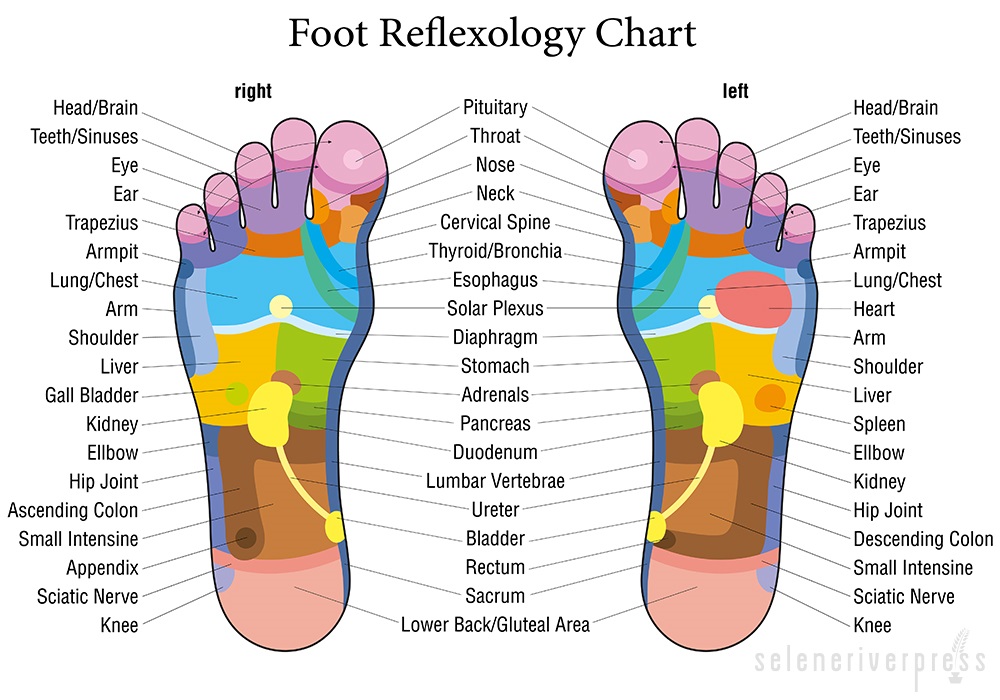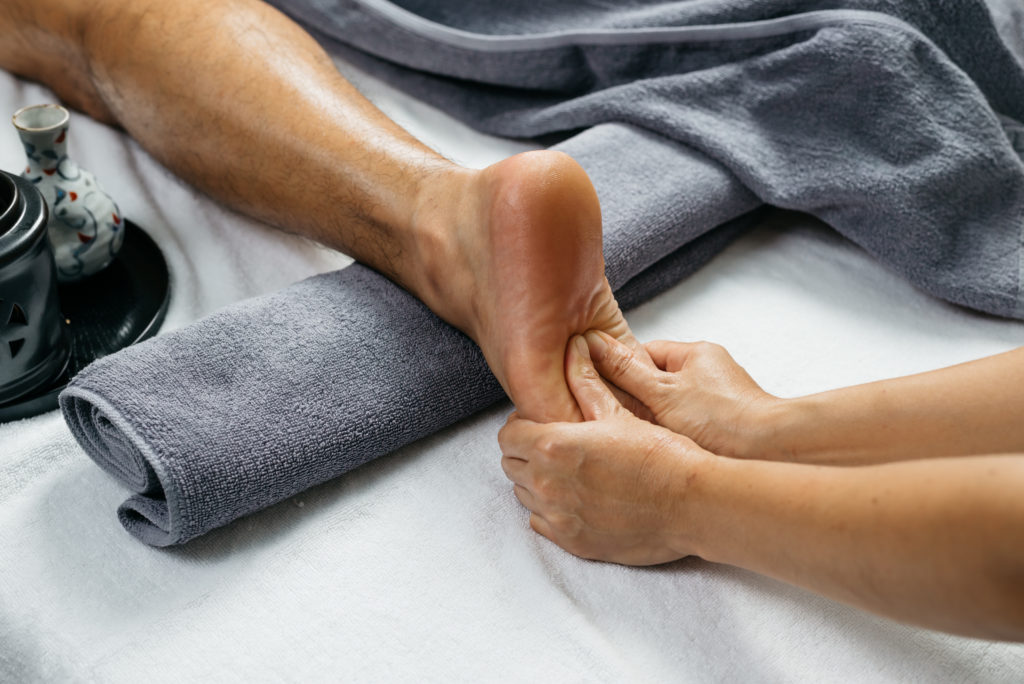This may come as a surprise, but your feet hold a vast and wonderful network of pathways that help keep you feeling at your optimum. The practice of reflexology, which is the gentle manipulation of certain parts of the foot, has led to many cases of healing when nothing else works. If you want to lend support to any lingering, ongoing health issues, take a few minutes to explore this highly effective modality.
Unfortunately, we seem to give our feet the least amount of care than any other part of the body. Why is that? Perhaps it’s because most of us simply don’t consider our feet important, unlike major organs like our heart and lungs. We rarely think of our feet contributing to our overall wellness. Of course, I agree that our major organs are more important than our feet, but I want to dispel the myth that they’re not important at all.
Read on to learn how the many parts of your body are associated with the bottoms of your precious feet. If you’ve been experiencing a longstanding illness or injury, you should be advised that your feet may hold the key to the healing. Let me tell you why that is.
After researching how reflexology works and seeking the perspective of a professional (read below), I learned that gentle pressure applied in the appropriate area of the bottom of the feet can have a profound effect in clearing an energy blockage in the body. This blockage may be preventing a certain organ, nerve, muscle, or ligament from healing.
The Professional Perspective
The annual Back to School for Doctors (BTS) seminar with Mark Anderson is always a wonderful opportunity to learn about the many amazing health discoveries based on the work of Dr. Royal Lee. This large gathering features a lavish free lunch and attracts Standard Process health practitioners from all over the country. It’s truly an unforgettable experience!
Last year at BTS, I just happened to make the acquaintance of one of those practitioners, LaShay Canady, HHP, CCN. Since then we’ve shared some great conversations about many topics, and reflexology has been one of them. Allow me to present LaShay Canady’s professional overview of reflexology:
Due to stress, illness, or inactivity, muscles in our bodies weaken. The muscle tissue in our feet gives way, and excessive pressure is exerted on nerve endings. As a result of these stresses, our bloodstream becomes congested and lacking in its oxygen-rich nutrients. Without the full cleansing power of the blood supply, waste matter collects in the feet, forming crystal-like deposits. During a therapeutic reflexology session, the feet are “worked” to breakdown these deposits, which build up around the reflexes and nerve endings in the feet.
Using reflexology, people can get relief from their physical symptoms, including the following:
- Birthing
- Headaches (gallbladder, liver, and neck reflex points)
- Sinus problems (sinus reflex points)
- Asthma
- Carpal tunnel syndrome (several hand and arm reflex points)
- Infertility challenges (reproductive reflex points)
- Constipation (colon reflex points)
- Menstrual problems (reproductive reflex points)
- Backaches (spine reflex points)
- Low energy and more
Reflexology is a science and healing art based upon the theory that there are reflex areas, or specific points, in the feet and hands that correspond to all the glands and organs in the body. Take, for example, a blister right below your big toe. It corresponds to the health of your parathyroid and thyroid bilaterally. A second example would be if you are having health issues with your reproductive system. That would prompt a reflexologist to work around both your ankle bones. Working around the bases of each toe corresponds to tight neck muscles.
The only tools used for reflexology are the thumb and fingers on the reflex points of the feet and hands. Reflexology is not massage, nor is it a replacement for modern medicine. Reflexology is based on theories that nerve pathways exist throughout the body. When any of these pathways become blocked, the body experiences levels of discomfort. Reflexology may assist in reviving one’s energy flow and bringing the body back into homeostasis, a state of balance.
Recommended Whole Food Supplements
One of the great lessons I learned from LeShay Canady was that whole supplements can be used to serve as a great baseline protocol to help keep those precious feet in tip-top shape by addressing pain, inflammation, tissue stress, and loss of function. You can use one of the recommended whole food supplements below, or use a combination of them if that works best for you. See your chiropractor or holistic practitioner to determine which are most relevant to your specific problems:
Great Foot Exercises
Exercise alone won’t give you the desired effects and possible healing that regular reflexology treatments will. Nevertheless, the proper exercises for your feet are important. Check out this wonderful video titled “7 Exercises for Fitter Feet.” It specifically addresses easy ways to give your feet the proper exercises they need.
What Kind of Thongs or Summer Sandals Are You Wearing?
Many of us use the worst of the worst foot ware! For example, look at our choice of thongs and sandals that we use all summer long. The detrimental effects of these so-called shoes are simply devastating. That’s why I was so excited to learn about Rainbow Sandals for the first time when I listened to a broadcast by Mike Boyle, who has a very popular restaurant radio show.
Boyle was talking up Rainbow Sandals as the best, most unique, and thoroughly functional sandals you can buy. They have arch support and many other features that make them worth every penny. No more cheap, junky sandals that damage your feet and offer no support! I highly encourage you to listen to their story in the link above. Then order yourself and your loved ones a pair. These are genuinely healthy! And yes, they’re made in the USA!!
Facts About the Soles of Our Feet and Essential Oils
According to Healing Harvest Homestead, essential oils have a very specific use when you rub them on the soles of your feet. On her website, Heidi Villegas explains that the skin on the bottom of our feet is tougher than the skin on other parts of our body, so using essential oils on the soles of our feet is very therapeutic, but it may have a reaction if we use them on other parts of our body.
Heidi also states that the bottoms of our feet are much more porous than any part of our body, and therefore the essential oils are readily absorbed into our system. Try rubbing a half of a garlic clove on the bottom of your foot, and you’ll soon taste it in your mouth! Garlic is a pretty powerful remedy.
For that reason, I recommend that you take a peek at two popular blog posts I wrote a while back. The first one is on the importance of “Anointing Your Body with Oil.”
The second is a comprehensive article on the use of essential oil titled “Precious, Ancient Liquid: A Primer on Essential Oil.” These two articles will give you a superb base with which to combine the proper oils with essential oils to make your very own foot rubs.
Last but Not Least: Advice on Choosing a Trained Reflexologist
Canady suggests that when you’re seeking a reflexologist, you should ask how many hours of in-class training and clinical hours they have completed. Different states have different legislation for the reflexology industry. Some states may require reflexologists to be licensed massage therapists first, while other states allow reflexologists to maintain the right to practice at reflexology’s own modality, such as the state of Colorado. Contact your Department of Regulatory Agency in your state to find out.
[xyz-ihs snippet=”Begin-Authors-Note”]Afterthoughts from the Traditional Cook
Below is some interesting information from The Foot Trainer:
- 3 out of 4 people experience serious foot problems in their lifetime.
- The foot contains 26 bones, 33 joints, 107 ligaments and 19 muscles.
- ¼ of all the bones in the human body are down in your feet. When these bones are out of alignment, so is the rest of the body.
- Only a small percentage of the population is born with foot problems.
- It’s neglect and a lack of awareness of proper care—including ill-fitting shoes that bring on problems.
- Women have about 4 times as many foot problems as men. High heels are partly to blame.
- Walking is the best exercise for your feet. It also contributes to your general health by improving circulation, contributing to weight control, and promoting all-around well being.
Note from Maria: I am a Certified Natural Health Professional, CNHP, not a medical doctor. I do not diagnose, prescribe for, treat, or claim to prevent, mitigate, or cure any human diseases. Please see your medical doctor prior to following any recommendations I make in my blogs or on my website.
Images from iStock/PeterHermesFurian (main), Bhakpong (foot massage), LeszekCzerwonka (shoes), pimpic (foot with oils).




